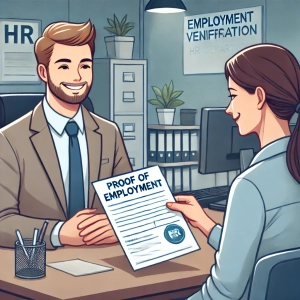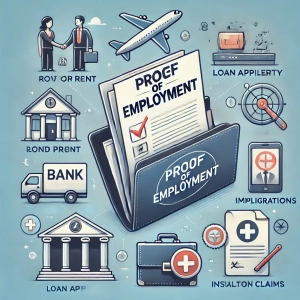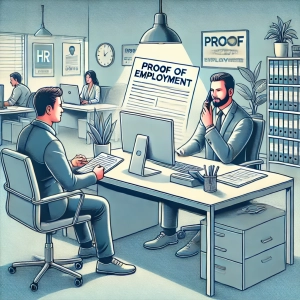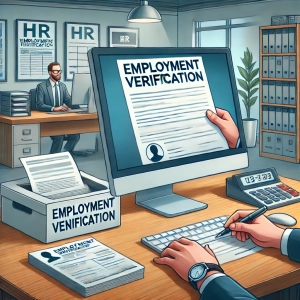Proof of Employment: What Is It, How to Get It, Why It Matters
Proof of employment is a document or set of documents that verifies your current or past employment status. It’s often required for various life events, such as renting an apartment, applying for a loan, or securing a new job. Understanding how to obtain proof of employment, its uses, and the process involved can help you navigate these situations with ease.
What Is Proof of Employment?
Proof of employment is documentation that confirms your work history, income, and other details related to your job. Employers typically provide it in the form of:
- Employment Verification Letter: A formal letter on company letterhead, stating your role, tenure, and income.
- Pay Stubs: Evidence of income over a specific period.
- Tax Documents: W-2s or 1099s can serve as official proof for lenders or landlords.
- Employment Contracts: Useful for freelancers or contractors.
When Might You Need Proof of Employment?
Proof of employment can be requested in several scenarios:
- Renting or Buying Property: Landlords and lenders use it to assess your ability to make payments.
- Applying for Loans or Credit Cards: Lenders often require verification of steady income.
- New Job Applications: Some employers request proof of past employment.
- Immigration Processes: Employment verification may be needed for work visas or residency applications.
- Insurance Claims: Certain claims, such as disability insurance, may require proof of income.
How to Obtain Proof of Employment
Here’s a step-by-step guide to getting proof of employment:
- Contact Your Employer or HR Department
- Most employers have a process for providing employment verification letters.
- Include details in your request, such as who the letter is for and any required details (salary, dates of employment, etc.).
- Use Online Systems
- Many companies use third-party platforms like The Work Number, which provides instant access to employment verification for authorized requests.
- Provide a Pay Stub or Tax Document
- If your employer can’t provide a letter, pay stubs or W-2 forms are widely accepted alternatives.
- Check Employment Contracts
- If you’re self-employed, contracts or client invoices can be sufficient proof.
- Write a Self-Attestation (When Necessary)
- If no other documentation is available, you can write a sworn statement detailing your employment. This is less formal but may be accepted in specific situations.
What Should Proof of Employment Include?
A proper proof of employment document should include the following details:
- Your full name.
- Employer’s name and contact information.
- Your job title.
- Employment dates (start and, if applicable, end date).
- Salary or hourly wage, if required.
- Employer’s signature and company letterhead for official documents.
Tips for Smooth Employment Verification
- Request Early: Anticipate the need for proof of employment and make your request in advance.
- Be Specific: Clearly communicate what information is required and who it’s for.
- Follow Up: If you don’t receive the document within a reasonable time, check in with your HR department or employer.
Conclusion
Proof of employment is an essential part of many financial and professional processes. Whether you’re applying for a mortgage, securing a new job, or verifying your income, knowing how to obtain and use these documents can save you time and hassle. If you’re unsure what’s required, reach out to your employer or consult with the requesting party for guidance.
PAA About Proof of Employment
Q: Can I use a pay stub as proof of employment?
A: Yes, pay stubs are commonly accepted as proof of employment, especially for financial applications.
Q: What if my employer refuses to provide proof of employment?
A: In such cases, you can use alternative documentation such as tax forms, bank statements showing direct deposits, or even a notarized self-attestation.
Q: How long does it take to get proof of employment?
A: It depends on your employer. Large organizations may provide it within days, while smaller businesses might take longer.






